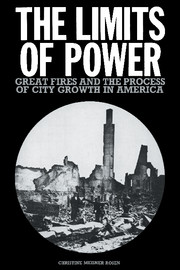Book contents
- Front Matter
- Contents
- List of figures and tables
- Acknowledgments
- Part I The conceptual framework
- 1 Introduction
- 2 The barriers to structural improvement
- 3 The barriers to infrastructural improvement
- 4 The barriers to spatial change
- Part II Three case studies
- Part III Conclusion
- Notes
- Sources of illustrations
- Index
3 - The barriers to infrastructural improvement
Published online by Cambridge University Press: 22 September 2009
- Front Matter
- Contents
- List of figures and tables
- Acknowledgments
- Part I The conceptual framework
- 1 Introduction
- 2 The barriers to structural improvement
- 3 The barriers to infrastructural improvement
- 4 The barriers to spatial change
- Part II Three case studies
- Part III Conclusion
- Notes
- Sources of illustrations
- Index
Summary
The task of adapting the built environment to the needs of rapidly growing urban communities involved much more than the redevelopment of privately owned buildings. In addition, it required that a vast range of improvements be made in street systems, water, sewerage, and power systems, streetcar and railroad systems, government buildings, and parks and other public recreation facilities – in today's language, the infrastructures of cities. Because a large number of frictions also mediated the process by which these infrastructures were redeveloped, they were no easier to improve than buildings.
Adapting infrastructures to the imperatives of economic and physical growth required their technological modernization as well as their physical establishment, physical extension, and spatial reorganization. These improvements can be summarized as follows:
First, in order to supplement or supplant the inadequate supplies of water provided by inefficient private water companies and local wells and springs, it was necessary that high-volume, high-pressure public water systems be established. This was essential for fire fighting and street cleaning, as well as for drinking purposes. It was especially important after industrial waste and seepage from privies and cesspools had polluted the water drawn from local streams, springs, and wells. In addition, once a water system was in place, further growth required that it be continually redeveloped.
- Type
- Chapter
- Information
- The Limits of PowerGreat Fires and the Process of City Growth in America, pp. 36 - 67Publisher: Cambridge University PressPrint publication year: 1986



